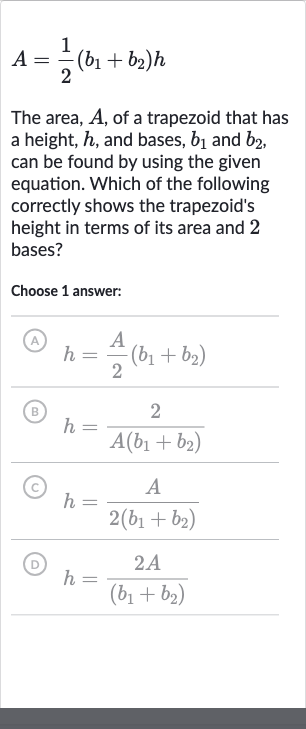Full solution
Q. The area, , of a trapezoid that has a height, , and bases, and , can be found by using the given equation. Which of the following correctly shows the trapezoid's height in terms of its area and bases?Choose answer:(A) (B) (C) (D)
- Given formula: We are given the formula for the area of a trapezoid: . We need to solve for in terms of , , and .
- Multiplying both sides: First, we multiply both sides of the equation by to get rid of the fraction on the right side. This gives us .
- Dividing to isolate : Next, we divide both sides of the equation by to isolate . This gives us .
- Checking options: We check the options given to see which one matches our derived formula for . The correct formula for is , which corresponds to option .
More problems from Compare linear and exponential growth
QuestionGet tutor help
QuestionGet tutor help
QuestionGet tutor help
QuestionGet tutor help
QuestionGet tutor help
QuestionGet tutor help
QuestionGet tutor help

